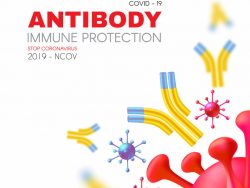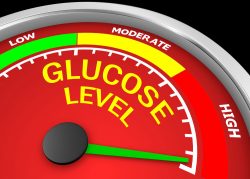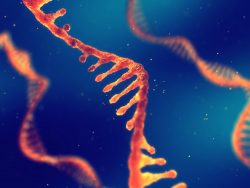Body Weight Has Surprising and Alarming Impact on Brain Function
 According to a new brain imaging study, when a person’s weight goes up, all regions of the brain will go down in blood flow and activity. The study has revealed that being overweight or obese seriously impacts activity in the brain and increases the risk for Alzheimer’s Disease in addition to a variety of other cognitive and psychiatric conditions.
According to a new brain imaging study, when a person’s weight goes up, all regions of the brain will go down in blood flow and activity. The study has revealed that being overweight or obese seriously impacts activity in the brain and increases the risk for Alzheimer’s Disease in addition to a variety of other cognitive and psychiatric conditions.
The study which is one of the largest studies to link obesity with brain dysfunction, included analysis of over 35,000 functional neuroimaging scans using single-photon emission computerized tomography (SPECT) from over 17,000 people to measure brain activity and brain flow. Low cerebral blood flow is the number one brain imaging predictor that a person will develop Alzheimer’s Disease. It is also linked to ADHD, depression, schizophrenia, bipolar disorder, addiction, traumatic brain injury, suicide and other psychiatric conditions.
Distinct patterns of progressively reduced blood flow was found in virtually every region of the brain across categories of normal weight, underweight, overweight, obesity and morbid obesity. The patterns were noted while the participants were in a resting state in addition to while they performed a concentration task.
Of particular interest, brain areas noted to be vulnerable to Alzheimer’s Disease (temporal and parietal lobes, posterior cingulate gyrus, precuneus and hippocampus) were found to have reduced blood flow along the spectrum of classifications of weight from normal weight to overweight, obese and morbidly obese. This is especially concerning news given that the latest statistics show that 72% of American are overweight and of whom 42% are obese.
The team has provided compelling evidence that obesity alters blood supply to the brain to shrink the brain and therefore promote Alzheimer’s disease. This is a very significant advance because it directly shows how the brain responds to our body.
The study highlights the real need to address obesity as a target for interventions that are designed to improve brain function. The team notes that one of the most important lessons learned is that brains can be improved when put in a healing environment through adopting brain healthy habits such as regular exercise and healthy calorie smart diets.
To view the original scientific study click below
Patterns of Regional Cerebral Blood Flow as a Function of Obesity in Adults.



 Investing time in education during childhood and early adulthood not only expands career opportunities and can provide progressively higher salaries, but it also conveys benefits to longevity and health. It can also boost the cognitive skills people can develop earlier in life, pushing back the time at which age related dementia will begin to impact a person’s ability to care for themselves.
Investing time in education during childhood and early adulthood not only expands career opportunities and can provide progressively higher salaries, but it also conveys benefits to longevity and health. It can also boost the cognitive skills people can develop earlier in life, pushing back the time at which age related dementia will begin to impact a person’s ability to care for themselves. Researchers at the Univ. of CA San Diego School of Medicine report that they have successfully implanted certain grafts of neural stem cells straight into spinal cord damage in mice. They then documented how the grafts mulitplied and filled the site of injury, mimicking the mice’s current neuronal network.
Researchers at the Univ. of CA San Diego School of Medicine report that they have successfully implanted certain grafts of neural stem cells straight into spinal cord damage in mice. They then documented how the grafts mulitplied and filled the site of injury, mimicking the mice’s current neuronal network.  Due to the millions of cases of COVID-19 reported worldwide, people are looking to antibody tests to see whether they have been exposed to the coronavirus that leads to the disease. Questions have arisen in regards to what exactly are antibodies and why are they important? People wonder if they have them are they immune to COVID-19 and if not why? Can a person be injected with antibodies as a treatment or preventative?
Due to the millions of cases of COVID-19 reported worldwide, people are looking to antibody tests to see whether they have been exposed to the coronavirus that leads to the disease. Questions have arisen in regards to what exactly are antibodies and why are they important? People wonder if they have them are they immune to COVID-19 and if not why? Can a person be injected with antibodies as a treatment or preventative? A recent study from the Colorado State University has discovered that physical stress at one’s job could possiby be associated with poorer memory and faster brain aging. This study is the first evidence that links occupational stress to accelerated brain and cognitive aging.
A recent study from the Colorado State University has discovered that physical stress at one’s job could possiby be associated with poorer memory and faster brain aging. This study is the first evidence that links occupational stress to accelerated brain and cognitive aging. Researchers have linked a diet high in protein and especially high in plant proteins to a lower risk of death from any cause. The team says their findings support current dietary recommendations for people to increase their consumption of plant proteins in the general population.
Researchers have linked a diet high in protein and especially high in plant proteins to a lower risk of death from any cause. The team says their findings support current dietary recommendations for people to increase their consumption of plant proteins in the general population. Doctors encourage people to engage in regular aerobic exercise which is important for achieving and maintaining better overall health. A new study has however, found out that some benefits of aerobic exercise might be influenced by higher than normal levels of blood sugar which is a condition known as hyperglycemia.
Doctors encourage people to engage in regular aerobic exercise which is important for achieving and maintaining better overall health. A new study has however, found out that some benefits of aerobic exercise might be influenced by higher than normal levels of blood sugar which is a condition known as hyperglycemia. New findings from the University of Colorado Boulder may lead to new therapies for a variety of diseases including heart abnormalities and cancer. The study led researchers to becoming one step closer to answering the fundamental question as to how a stem cell, which is the raw material with which our tissue cells and organs are made of, knows what to become?
New findings from the University of Colorado Boulder may lead to new therapies for a variety of diseases including heart abnormalities and cancer. The study led researchers to becoming one step closer to answering the fundamental question as to how a stem cell, which is the raw material with which our tissue cells and organs are made of, knows what to become? Plastic surgeons have for some time been using stem cells to treat aging and sun damaged skin with good results. However, it has not been exactly how these treatments work to rejuvenate “protoaged” skin on the face. A new study has found that within a few weeks, stem cell treatments will eliminate the sun damaged elastin network and replace them with normal undamaged structures and tissues.
Plastic surgeons have for some time been using stem cells to treat aging and sun damaged skin with good results. However, it has not been exactly how these treatments work to rejuvenate “protoaged” skin on the face. A new study has found that within a few weeks, stem cell treatments will eliminate the sun damaged elastin network and replace them with normal undamaged structures and tissues. A new study has shown that fish oil can create an antidepressant response. The study used patient derived stem cells as a model for major depressive disorder to test how a patient responds to medication and also fish oil.
A new study has shown that fish oil can create an antidepressant response. The study used patient derived stem cells as a model for major depressive disorder to test how a patient responds to medication and also fish oil.